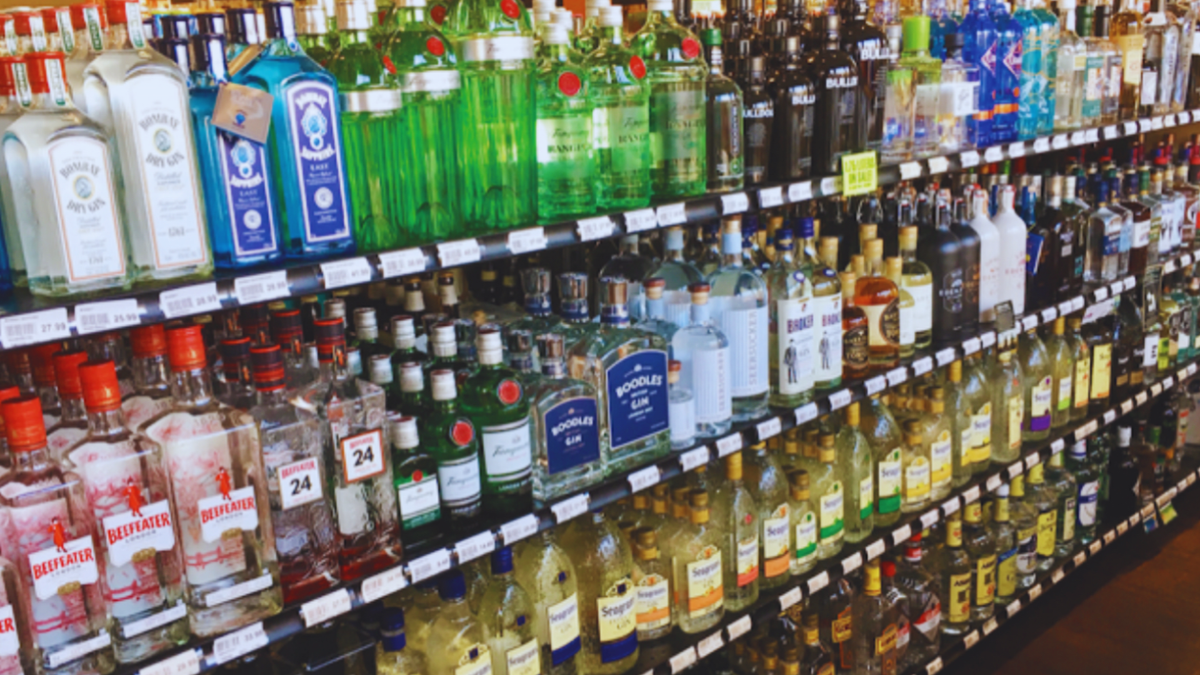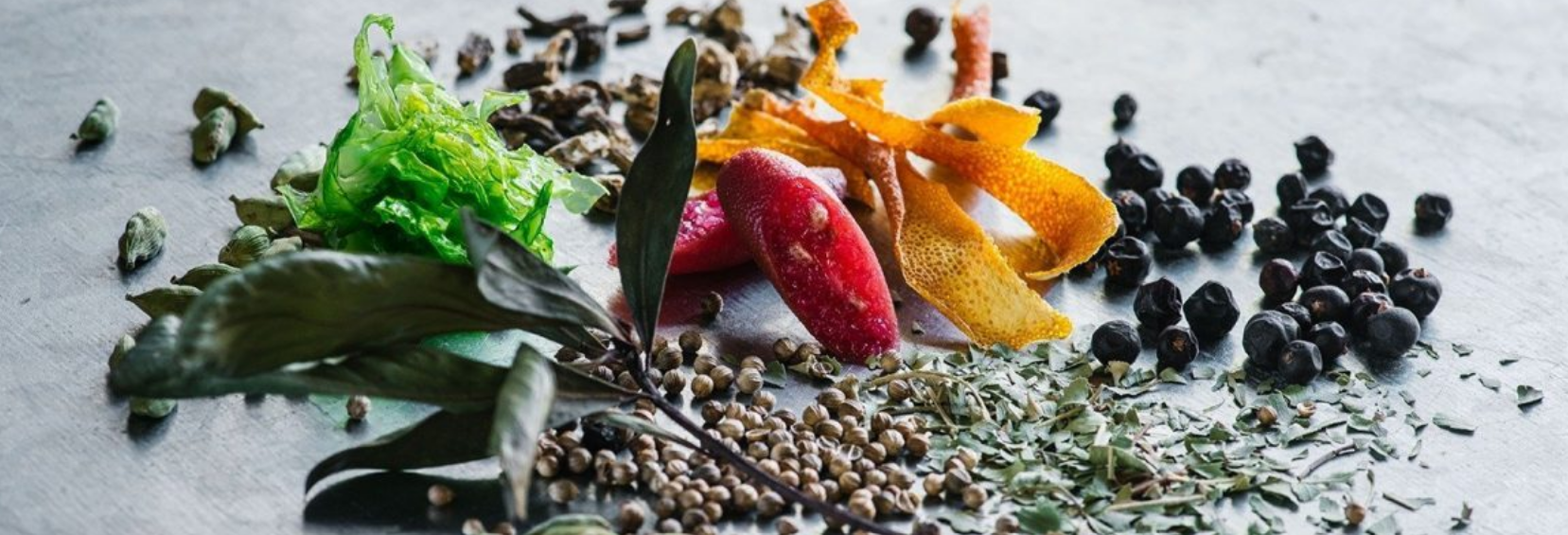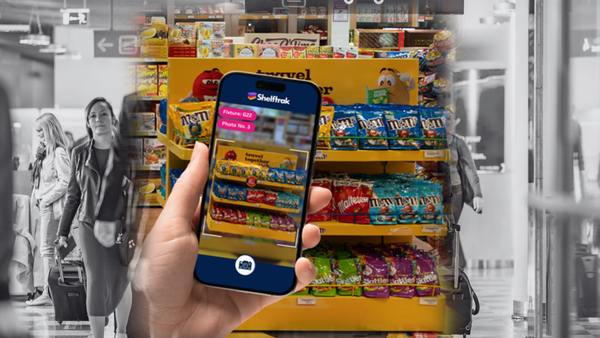Gin in Travel Retail is Dead. Long Live Gin!

The era of unchecked growth is over, but the category still has a vibrant, evolving future if managed well.
Introduction
Over the last decade, gin has enjoyed a period of exceptional growth in travel retail and domestic markets alike. This success was driven by innovation, premiumisation, and the explosion of flavoured and craft offerings. But as we trade through 2025, the landscape has shifted: gin is now a mature category. As such, managing the gin category today demands a new approach. The challenge is no longer about listing more SKUs, but about ensuring every product earns its place on the shelf.
If suppliers and retailers work together to manage the segment correctly, the gin category can easily maintain shopper loyalty and maximise value. The category needs to evolve into a more curated, insight-driven offering that drives growth by focusing on simplicity, differentiation, and shop-ability.
The Maturation of the Gin Market
According to IWSR and insights from other leading data providers, the global gin market reached 107 million nine-litre cases in 2024, 25% ahead of 2019 levels. However, growth is slowing: from +4% in 2023 to +2% in 2024.
Flavoured gin volumes in the UK have nearly halved since their 2020 peak, when they accounted for over 30% of the category. Premium-and-above volumes are forecast to decline by 5% CAGR from 2023 to 2028 in the UK.
Clearly the gin market is transitioning into a more mature phase and the challenge for the segment now is to retain the customers it's acquired during the last 10 years and evolve in a structured way to attract new ones.
To manage this evolution and command control of the future, the category must now look at SKU curation. During the boom, every botanical twist was brought to market. The result we see in many airport shops today - cluttered shelves and overwhelmed shoppers. The future goal: retain loyalty, maintain sales, and grow sensibly by focusing on consumer-led assortment planning.

SKU Curation: Why It Matters Now
Shopper Insight: Shoppers typically make fast decisions in-store, with most considering a maximum of 10 SKUs in a category like gin before making a purchase. This means that while range is important, excessive variety becomes irrelevant beyond the consideration threshold.
Choice Overload: As highlighted in numerous shopper studies, more choice is not always better. In fact, over-assortment can reduce shopper satisfaction, delay decisions, and increase the likelihood of walkaways.
In travel retail, where dwell time is limited and mission-based shopping dominates, this effect is even more acute. A bloated gin category not only confuses the shopper but also obscures standout SKUs that should be driving category value.
Efficient Category Management: According to McKinsey, reducing SKU count by 20–30% in over-assorted categories typically results in improved shelf performance — including increased sales per facing, better navigation, and improved stock management. Rationalisation makes the category easier to shop, easier to restock, and ultimately more productive per square metre.
The 80/20 Rule: Multiple studies as well as Shelftrak’s own analysis, consistently shows that roughly 20% of SKUs deliver up to 80% of category sales. These top performers are often buried among duplicate listings. Prioritising visibility, availability, and space for high-performing SKUs while trimming the long tail is key to improving both sales velocity and shopper satisfaction.
Strategic Curation Over Clutter: In a mature market, the purpose of SKU curation is not to reduce choice, it is to preserve meaningful choice. A well-curated range respects shopper needs across price points, taste preferences, and usage occasions, without overwhelming them with repetition. It also makes room for newness, limited editions, and innovation to stand out, rather than get lost in a cluttered offer.
A leading gin brand recently noted that a major travel retail operator had stated, “We’re not accepting any further listings of gin.” While this stance reflects a response to the category’s saturation, it risks overlooking a more strategic opportunity. Rather than halting listings altogether, the focus should shift toward active curation. The art now is to refine the range to maintain shopper interest, support innovation, and prevent the category from stagnating.
Examples from Travel Retail
One of the key indicators we monitor at Shelftrak to evaluate category efficiency is SKU density: how many unique products are presented per metre of shelf space. When this ratio is too high, shopper visibility suffers, store teams struggle to maintain presentation standards, and performance per SKU diminishes.
Based on our current benchmarking, we flag gin categories as over-assorted when they meet the following conditions:
SKU Density Ratio (SDR) greater than 2.5 — i.e., more than 2.5 SKUs per linear metre - which reduces space per SKU and contributes to clutter and shopper-overwhelm.
More than 60 unique SKUs are listed at store level (For large formats, less for smaller stores).
Flavoured gins exceed 30% of the total range, suggesting an imbalance between choice and core performance.
This approach acts as a framework that informs deeper investigation, the headlines providing an insight in to areas that need to be considered further.
Regional Insight: Asia Travel Retail (15 airports, 20 stores)
50% of stores exceed the SDR threshold of 2.5, indicating potential shelf crowding and compromised visibility.
35% of stores reviewed feature a range size above 60 SKUs, with several listing 90+ SKUs and with one location at almost 130 SKUs! No one is benefiting here.
55% of stores devote more than 30% of range to flavoured gins.
MENA (6 airports, 8 stores)
35% of stores exceed the SDR threshold.
100% of stores have more than 30% of their range in flavours.
50% of stores list more than 60 SKUs
EUROPE (17 airports, 27 stores)
60% of stores exceed the SDR threshold.
70% of stores have more than 30% of their range in flavours.
30% of stores list more than 60 SKUs
AMERICAS (10 airports, 14 stores)
50% of stores exceed the SDR threshold.
50% of stores have more than 30% of their range in flavours.
These figures underscore the importance of needing to balance assortment with space, clarity, and shopper needs. Where ranges have grown unchecked, often from legacy listings or excessive innovation, the category risks underperforming not due to lack of interest, but because of poor execution.
While these benchmarks offer a useful framework for identifying category inefficiencies, we also recognise that each airport location operates within its own unique commercial, spatial, and shopper dynamics. As such, this framework is used as directional guidance, with final decisions tailored to the specific context of each store.
So What Does a Healthy Gin Range Look Like?
A well-performing gin range in travel retail typically consists of 20–50 SKUs per store, dependent on space and shopper profile. This count balances choice and clarity, allowing a full category offer without duplication.
Assortment Coverage Should Span:
Entry-level and accessible price points for value-driven shoppers.
Core brands with proven loyalty and recognition to anchor the range.
Premium and experimental SKUs that introduce excitement and allow trade-up.
Flavoured and craft gins that reflect local culture, shopper curiosity, and gifting needs.
Segment SKUs by Role, Not Just Brand:
Hero SKUs: Top-performing sellers that drive velocity and visibility.
Innovation/Newness: Limited-time offers and rotating launches that refresh the range.
Premium Trade-Up: Elevated propositions to support margin.
Gift/Experience SKUs: Formats with added value through design, packaging, exclusivity and story-telling attributes.
Avoid:
Listing multiple SKUs with near-identical flavour profiles.
Retaining legacy SKUs with poor sales contribution or weak shopper relevance.
Ignoring space-to-sales performance when assigning shelf or promotional space.
Listing multiple SKUs of the same flavour or brand without distinct shopper value.
Keeping slow-sellers due to legacy listings.
Future-Proofing the Gin Offer
As gin enters its mature phase, future-proofing the category in travel retail is not about chasing explosive growth, it’s about sustaining relevance, protecting loyalty, and evolving intelligently. A maturing category, when actively managed, presents a unique opportunity: to deepen shopper engagement, refine the offer, and strengthen its commercial return.
Lead with a Localised Global Strategy:
As traditional strongholds like the UK and Spain plateau, operators and suppliers must shift their strategic focus. Developed markets must maintain balance while global growth is now likely to be led by new markets. Local preferences, flavour trends, and price sensitivities in these regions should be reflected in the SKU selection. A "one size fits all" approach will not work.
Support Discovery Without Chaos:
Shoppers will still seek experience and storytelling. The goal is to make discovery feel curated and intentional. Introduce seasonal, craft, or mixology-focused SKUs through clearly defined rotation zones or trial spaces. Keep the base range stable, but allow for controlled innovation that delivers excitement.
Drive Experience at Shelf-Level:
Premium gin remains an experiential category. Boost value perception through premium pack formats, compelling POS materials, QR code-linked mixology content, or tasting activations. Make mixology part of the shopping experience. Make the shelf feel like a curated space, not a warehouse of bottles.
Position the Category as Gifting-Friendly:
In an environment where gifting is a core mission, ensure a selection of gins are packaged and presented in formats that look and feel like gifts. Highlight exclusivity, special editions, or local distilleries that align with travel or cultural moments.
Include Tasting as a Critical Tool:
While not always easy or cost-effective in airport environments, tastings remain essential for trial and discovery. They bridge the gap between curiosity and conversion, helping brands introduce new flavours and drive premiumisation. Creative and scaled solutions should be explored to bring sampling into the heart of the shopper journey.
Champion Sustainability and Responsibility:
As sustainability becomes a key shopper value, give visibility to brands with legitimate sustainability credentials — from botanicals to packaging to carbon footprint. Clearly communicate these on-shelf or through signage.
Embed Agility into Planning:
Finally, treat the category like a living ecosystem. Use ongoing performance data, shopper feedback, and trend monitoring to refine and refresh the range regularly. Maturity does not mean rigidity, it means smarter, more responsive category stewardship.
Collaboration is Key
Future-proofing gin is not the sole responsibility of the retailer. Success lies in a collaborative model where both retailers and suppliers share a joint vision, plan together, and align on objectives. When this harmony is achieved, brands are far more likely to invest in innovation, activations, and data-led support to elevate the category for their retail partners.
And this is exactly why Shelftrak exists — to empower both suppliers and retailers with the data they need to identify the opportunities that drive growth, improve execution, and future-proof categories with confidence.

Conclusion
Depending on the region, the gin category is maturing or has reached maturity. Travel retail must respond with smarter, more strategic assortment decisions. Every SKU must now be listed on merit, not just trend.
Shopper needs have evolved: they still want choice, price points, newness, and premium choices, but they need it to be shoppable, engaging, and meaningful.
A tighter, better-rationalised gin category will ensure the loyalty of the shoppers acquired during the boom, while setting the stage for a more resilient and focused future.
Travel retail has an opportunity to show how a mature gin category can still be vibrant, meaningful, and commercially rewarding - if managed with purpose.
Let us not fear the slowdown. Let us manage it with precision.
At Shelftrak, we make our judgement and recommendations by looking at SKU-level data from 50 global airports and overlaying this with more than 20 years of experience working with brands and retailers, offering category management solutions across multiple CPG categories in travel retail.
Sources:
Redburn Atlantic, Ehrenberg-Bass Institute, Nielsen Shopper Trends, Iyengar & Lepper (2000), ISWR 2024, Shelftrak data.
Don’t leave your travel retail success to chance
Shelftrak helps you monitor and optimise every display across your global duty-free footprint. Book a demo to see how our solution ensures you turn travelers’ heads – and capture their purchases – every time.






